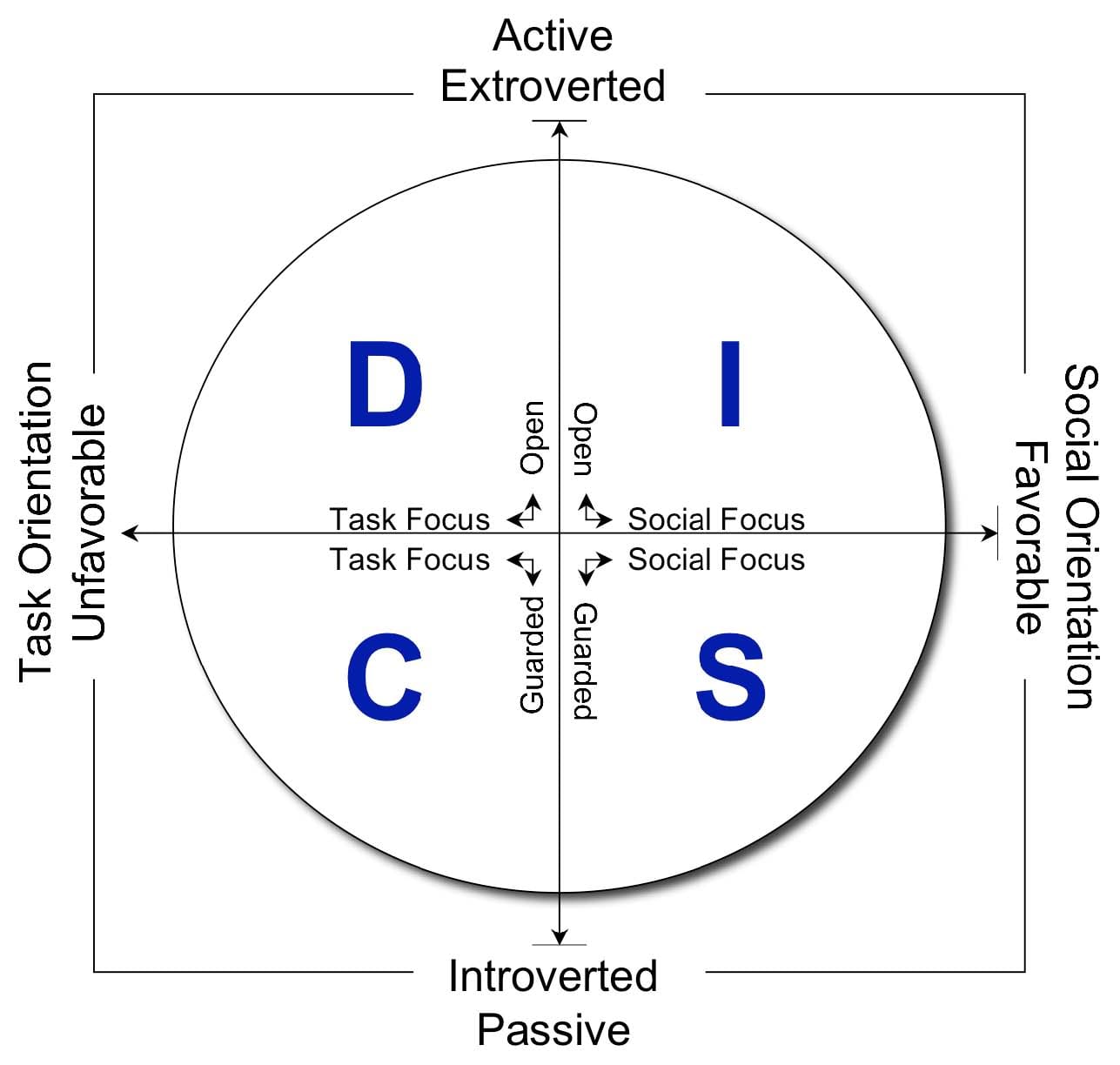Recently one of my leadership coaching clients and I had a discussion about the dynamics of a DISC assessment and its relationship to company leadership and employee motivation. She wanted to understand how her DISC preferences impacted her ability to lead her employees and how she could use knowledge of her own DISC to motivate her employees. As her leadership coach I used the following to inform our discussion.
Since Dr. William Marston’s publication of Emotions of Normal People in 1923, when he popularized the view that people’s behavior could be described along 2 axes such that their action orientation was either passive or active and their perception of their environment as either favorable or unfavorable; a number of subsequent researchers have contributed to his original research, culminating in Walter Clarke’s development of the DISC Index in 1956 and Dr. John G. Geier subsequent work on the final instrument framework for DISC.
DISC Index And Leadership Interrelationships
As the diagram illustrates, the two upper quadrant (D and I) leaders are extroverted and active in nature, seeking to modify, control, influence or shape their environment according to their own particular view. These are leaders who focus on the what of a situation more than the how or why and they continually challenge and test the limits of the surroundings and seek new ways. The two bottom quadrant (S and C) leaders are passive and introverted in nature, seeking to focus on the how and the why of a situation and instead of trying to change the existing environment they are more interested in protecting or continuing it.
# 1. Employee Motivation and Decisive Leaders
A leader with high Decisiveness tendencies has a clear picture in her mind of what results she wants. Her actions or messages are designed to promote that idea and to get others to support those results. In order for a high “D” leader to effectively improve employee motivation she needs to communicate to her employees her end result by communicating the end result through the effective use of permission-based questions, i.e.: Would you like to help me achieve X by Y date? (Remember, the question only concerns itself with the “what.”)
# 2. Influencing Leaders
High Influencing tendency leaders also want to shape and mold events and have an active voice in that process. Her actions or messages are also designed to promote that idea and get others to support those results, but she tends to do so by working with or through people more using permission-based employee motivation questions that focus on working with others, i.e.: Would it be o.k. if we work together to achieve X by Y date? (Still concerned with the “what.”)
# 3. Stabilizing Leaders
High Stabilizing tendency leaders are more passive and introverted and interested in the how and why—a product orientation. Her primary interests are in maintaining stability within herself and the situation. Permission-based employee motivation questions that address the specifics are important to this leader tendency, i.e.: Would you be willing to help me identify the specific steps necessary for us to complete X before Y date?
# 4. Cautious Leaders
High Cautious tendency leaders are also more passive and introverted. She also takes a product orientation, asking for specific reasons behind changes and supporting data to back up the decision to change. Why is her favorite question in order to get things done accurately. She is quite receptive to permission-based employee motivation questions messages that reassure her that she and her employees are doing it correctly, i.e.: Can you help me identify how X can be accomplished before Y date, and can you help identify the specific steps we need to take to do so?
# 5. Decisive & Influencing Leaders
As you can surmise high Decisive and Influencing leader combinations focus on the what, speed, and interactions with others. Her permission-based employee motivation questions look like this, i.e.: Will you help me to achieve X by Y date if we can do it together?
# 6. Influencing & Stabilizing Leaders
High Influencing and Stabilizing leader combinations focus on people and process, she wants to make sure everyone is involved in the process. Her permission-based employee motivation questions look like this, i.e.: Would you all like to help me develop the steps to complete X before Y date, to make sure we all benefit from each others ideas?
# 7. Stabilizing & Cautious Leaders
High Stabilizing and Cautious leader combinations tend to slow the pace down a bit, focusing on process and tasks equally, and she makes sure that others identify the steps and results to ensure work is done correctly. Her permission-based employee motivation questions look like this , i.e.: It’s very important that you detail the steps you need to take to accomplish X by Y date, will you make sure that you record the steps and fully describe how you accomplished it?
# 8. Cautious & Decisive Leaders
High Cautious and Decisive leader combinations are a challenge, no doubt. She combines interest in the end result with a need for the detail. Her permission-based employee motivation questions look like this, i.e.: Will you be able to identify the steps needed to accomplish X by Y date?
Leadership coaching as well as leadership training activities utilize the DISC Index and other psychometric assessments to help leaders better understand themselves and to then use that knowledge to improve employee motivation on a continual basis. Which profile fits you best?
[i] I acknowledge the contributions of Jay Niblick in a concise descriptor of the research summarized in this article, from his work, The Innermetrix DISC & Values Index Training Manual – The “HOW” & “WHY” of Human Performance, Innermetrix, 2009.
Did you like this article? Sign up for our RSS, join us on Facebook, on Twitter and on Google+ to get the latest Tweak Your Biz articles and updates.


